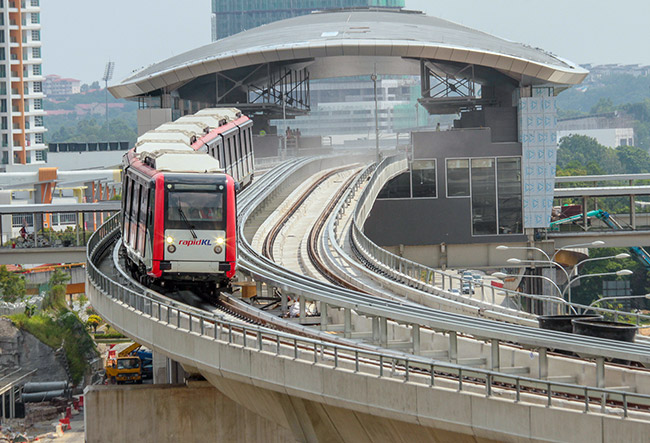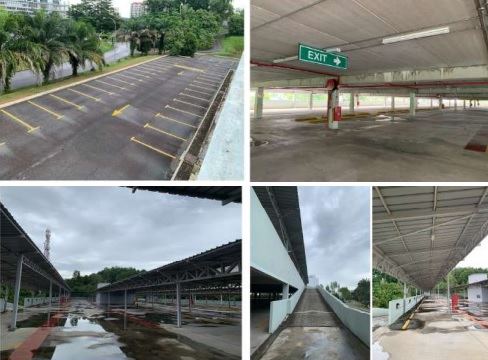Autonomous vehicles (AVs) are no longer subjects of science fiction stories and movies as they are already in use today, though many do not realise it. For example, the monorail in Kuala Lumpur and the light rapid transit (LRT) systems are autonomous in operation, managed by computers from a central control centre.
However, the technology can still be considered in its infancy and much research and development is required to make it reliable and safe so that it can one day be used in passenger vehicles on public roads. While some car companies have made progress in this area, it is still far from being technology which can be readily incorporated.


Much of the R&D work requires teaching the systems that operate vehicles how to function. This can be likened to teaching someone to drive, except that the human brain can go beyond just learning but also think, reason and respond accordingly. Computers are still at the stage where they can make decisions based on what they are taught but have still to ‘think’ and respond to variations.

Artificial Intelligence (AI) is one way to provide that ‘thinking’ capability but if you have used the intelligent infotainment systems in cars which can respond to questions, you will find that they are still limited to some extent. Over time, they can learn a bit more but they still know only what they have been taught.
To help researchers and developers in their work on AVs, MRANTI (Malaysian Research Accelerator for Technology and Innovation) has established a huge multi-scenario AV experimental laboratory at MRANTI Park in Bukit Jalil, outside Kuala Lumpur. Referred to as AV XL, this is the country’s largest facility of its kind which will contribute to accelerating the development of Malaysia’s mobility sector.

MRANTI is Malaysia’s central research commercialisation agency formed with the combining of Technology Park Malaysia Corporation (TPM) and the Malaysian Global Innovation and Creativity Centre (MaGIC). Both TPM and MaGIC are agencies under the Ministry of Science, Technology and Innovation.

The experiential lab represents a comprehensive approach based on the principles of human-centred innovation and designed for co-creation, adaptability and responsiveness. It comprises a 12-km test route and includes an enclosed multi-storey car park which can be used for testing autonomous parking functions.


The facility also has a digital twin for virtual testing prior to physical deployment, 5G network coverage and infrastructure for ultra fast data cellular transmission. “MRANTI Park is leading the way as Malaysia’s first 5G-enabled innovation park, featuring a 5G Experience Centre. Being 5G infrastructure-ready means the park community, innovators and researchers benefit from communication efficiency (higher data rates, lower latency), connection density (reliability, availability and coverage) and position accuracy (higher user mobility),” said Datuk Wira Dr. Rais Hussin, CEO of MRANTI.

Efforts are also underway to offer an AV simulator and the MRANTI Deploy AV-as-a-Service Certification which aims to be the base reference for the national adoption and deployment of AVs on Malaysia’s roads depending on the approval of the relevant parties.

The MRANTI AV XL is open to any organisation developing AVs – including those for aerial mobility – and can work in partnership or other forms of collaboration. At the launch today, it was announced that there are already 8 AV research projects with partners such as University of Nottingham Malaysia, NanoMalaysia, and the Energy Research Institute at Nanyang Technological University Singapore which manages the Centre of Excellence for Testing & Research of AVs (CETRAN).
“Our vision for this one-stop AV XL is to provide innovators, corporates, researchers, and companies the support they need to rapidly explore, test, validate and evolve solutions in a controlled environment. MRANTI AV XL is capable of hosting multiple scenarios at any stage of the R&D C&I lifecycle and by bringing these key AV players together on this platform, we hope to fast-track the development of the industry and drive the future of mobility in Malaysia and the region,” said Chang Lih Kang, Minister of Science, Technology and Innovation.
“This effort supports the National Automotive Policy 2020 which includes objectives such as the creation of AV test sites and promoting Next-Generation Vehicles or NxGVs. In addition, it is also an initiative that can improve efficiency and reduce carbon emissions in the future. MRANTI AV XL which is the largest AV technology testing and verification site in the country,” said Mr. Chang.
MRANTI Park opens test course for development of Autonomous Vehicles


